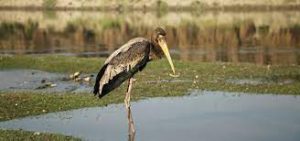Central Asian Flyway: Conserving Migratory Bird

Eleven countries have collaborated to strengthen conservation efforts for migratory birds and their habitats in the Central Asian Flyway (CAF).
- The meeting was conducted by The Ministry of Environment, Forest and Climate Change in collaboration with the United Nations Environment Programme/Convention on Migratory Species (UNEP/CMS).
- A flyway is a geographical region within which a single or a group of migratory species completes its annual cycle i.e. breeding, moulting, staging and non-breeding. Migratory birds from 3 flyways (CAF, East Asian Australasian Flyway and Asian East African Flyway) visit India.
- Central Asian Flyway (CAF) Covers a large area of Eurasia between the Arctic and Indian Oceans.
- One of the nine most important flyways for migratory birds around the world.
- It extends from the northernmost breeding grounds in the Russian Federation (Siberia) to the southernmost non-breeding (wintering) grounds in West and South Asia, the Maldives and British Indian Ocean Territory.
- Importance is Conserving migratory birds requires cooperation and coordination along the entire flyway between countries and across national boundaries.
- Treaty Convention on Migratory Species (CMS) or the Bonn Convention: an intergovernmental treaty (under the aegis of UNEP; signed in 1979 in Bonn, Germany, and entered into force in 1983) is the only global convention specializing in the conservation of migratory species, their habitats, and migration routes.
- Major Species using this flyway Species such as the Baer’s pochard (CR); northern bald ibis (CR), greater adjutant (EN) and black-necked crane (Vu), Indian skimmer (Vu) etc.,




